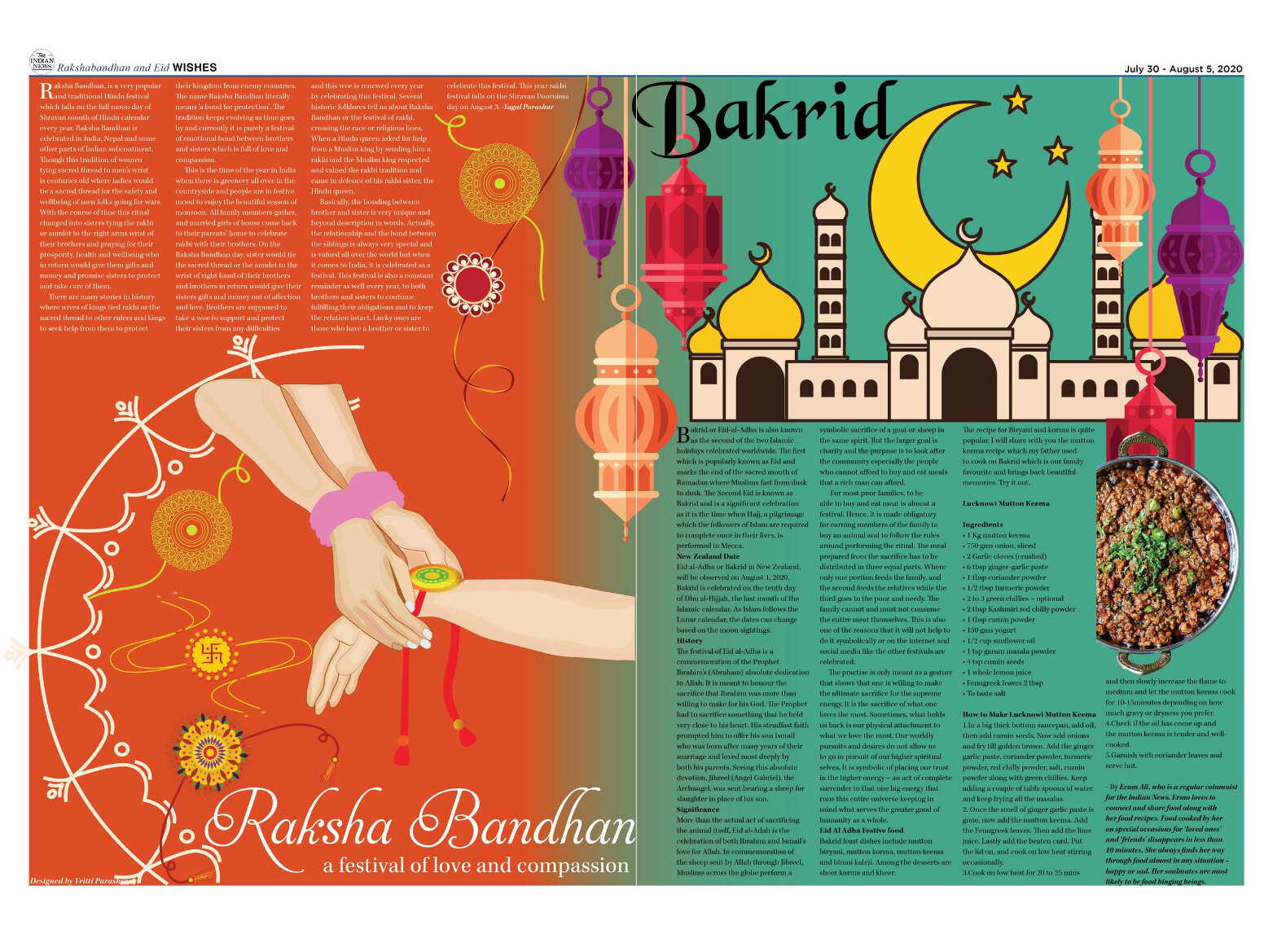Bakrid or Eid-al-Adha is also known as the second of the two Islamic holidays celebrated worldwide. The first which is popularly known as Eid and marks the end of the sacred month of Ramadan where Muslims fast from dusk to dusk. The Second Eid is known as Bakrid and is a significant celebration as it is the time when Hajj, a pilgrimage which the followers of Islam are required to complete once in their lives, is performed in Mecca. New Zealand Date Eid al-Adha or Bakrid in New Zealand, will be observed on August 1, 2020. Bakrid is celebrated on the tenth day of Dhu al-Hijjah, the last month of the Islamic calendar. As Islam follows the Lunar calendar, the dates can change based on the moon sightings.
History
The festival of Eid al-Adha is a commemoration of the Prophet Ibrahim’s (Abraham) absolute dedication to Allah. It is meant to honour the sacrifice that Ibrahim was more than willing to make for his God. The Prophet had to sacrifice something that he held very close to his heart. His steadfast faith prompted him to offer his son Ismail who was born after many years of their marriage and loved most deeply by both his parents. Seeing this absolute devotion, Jibreel (Angel Gabriel), the Archangel, was sent bearing a sheep for slaughter in place of his son.
Significance
More than the actual act of sacrificing the animal itself, Eid al-Adah is the celebration of both Ibrahim and Ismail’s love for Allah. In commemoration of the sheep sent by Allah through Jibreel, Muslims across the globe perform a symbolic sacrifice of a goat or sheep in the same spirit. But the larger goal is charity and the purpose is to look after the community especially the people who cannot afford to buy and eat meals that a rich man can afford.
For most poor families, to be able to buy and eat meat is almost a festival. Hence, it is made obligatory for earning members of the family to buy an animal and to follow the rules around performing the ritual. The meal prepared from the sacrifice has to be distributed in three equal parts. Where only one portion feeds the family, and the second feeds the relatives while the third goes to the poor and needy. The family cannot and must not consume the entire meat themselves. This is also one of the reasons that it will not help to do it symbolically or on the internet and social media like the other festivals are celebrated.
The practice is only meant as a gesture that shows that one is willing to make the ultimate sacrifice for the supreme energy. It is the sacrifice of what one loves the most. Sometimes, what holds us back is our physical attachment to what we love the most. Our worldly pursuits and desires do not allow us to go in pursuit of our higher spiritual selves. It is symbolic of placing our trust in the higher energy – an act of complete surrender to that one big energy that runs this entire universe keeping in mind what serves the greater good of humanity as a whole.
Eid-al-Adha festive food
Bakrid feast dishes include mutton biryani, mutton korma, mutton keema and bhuni kaleji. Among the desserts are sheer kurma and kheer. The recipe for Biryani and korma is quite popular. I will share with you the mutton keema recipe which my father used to cook on Bakrid which is our family favourite and brings back beautiful memories. Try it out.
Lucknowi Mutton Keema
Ingredients
-
1 Kg mutton keema
-
750 gms onion, sliced
-
2 Garlic cloves (crushed)
-
6 tbsp ginger-garlic paste
-
1 tbsp coriander powder
-
1/2 tbsp turmeric powder
-
2 to 3 green chillies – optional
-
2 tbsp Kashmiri red chilly powder
-
1 tbsp cumin powder
-
150 gms yogurt
-
1/2 cup sunflower oil
-
1 tsp garam masala powder
-
4 tsp cumin seeds
-
1 whole lemon juice
-
Fenugreek leaves 2 tbsp
-
To taste salt
How to make Lucknowi Mutton Keema
-
In a big thick bottom saucepan, add oil, then add cumin seeds. Now add onions and fry till golden brown. Add the ginger garlic paste, coriander powder, turmeric powder, red chilly powder, salt, cumin powder along with green chillies. Keep adding a couple of table spoons of water and keep frying all the masalas.
-
Once the smell of ginger garlic paste is gone, now add the mutton keema. Add the Fenugreek leaves. Then add the lime juice. Lastly add the beaten curd. Put the lid on, and cook on low heat stirring occasionally.
-
Cook on low heat for 20 to 25 mins and then slowly increase the flame to medium and let the mutton keema cook for 10-15minutes depending on how much gravy or dryness you prefer. 4.Check if the oil has come up and the mutton keema is tender and well-cooked. 5.Garnish with coriander leaves and serve hot.
– By Erum Ali
She is a regular columnist for the Indian News. Erum loves to connect and share food along with her food recipes. Food cooked by her on special occasions for ‘loved ones’ and ‘friends’ disappears in less than 10 minutes. She always finds her way through food almost in any situation – happy or sad. Her soulmates are most likely to be food binging beings.



